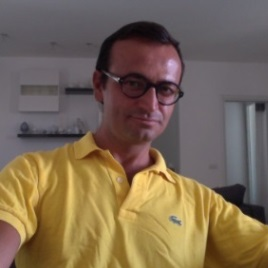The Role of Cultural Heritage in Promoting the Sustainable Development of Cities and Territories
A special issue of Sustainability (ISSN 2071-1050). This special issue belongs to the section "Sustainable Urban and Rural Development".
Deadline for manuscript submissions: closed (1 May 2023) | Viewed by 17001
Special Issue Editors
Interests: urban planning; urban design; urban regeneration; GIS science; collaborative planning
Interests: urban planning and management; urban policies; territorial strategies for sustainability and resilience
Special Issue Information
Dear Colleagues,
This Special Issue aims to explore innovative and resilient ways to recognize, adapt, and enhance both cultural and natural heritage, in the new environmental, social, and economic conditions imposed by urbanization processes, climate change, and recent global crises.
The “heritage” is interpreted in its broad meaning as the outcome and process of progressive accumulation of material and immaterial goods, to be passed on to future generations sharing its value (Faro Convention).
The Issue assumes cultural and natural heritage as a complex system useful for promoting sustainable development in cities and territories—a system characterized by shared phenomena and local specificities that, now more than ever, need to be studied and addressed in an integrated, multidisciplinary, and structural way.
We encourage researchers, practitioners, and scientists to submit original research articles, case studies, reviews, critical perspectives, and viewpoint articles on topics including but not limited to:
- Sustainable cities and territories;
- Cultural and natural heritage.
Dr. Francesco Rotondo
Guest Editor
Dr. Giovanna Mangialardi
Dr. Mariella Annese
Co-Guest Editors
Manuscript Submission Information
Manuscripts should be submitted online at www.mdpi.com by registering and logging in to this website. Once you are registered, click here to go to the submission form. Manuscripts can be submitted until the deadline. All submissions that pass pre-check are peer-reviewed. Accepted papers will be published continuously in the journal (as soon as accepted) and will be listed together on the special issue website. Research articles, review articles as well as short communications are invited. For planned papers, a title and short abstract (about 100 words) can be sent to the Editorial Office for announcement on this website.
Submitted manuscripts should not have been published previously, nor be under consideration for publication elsewhere (except conference proceedings papers). All manuscripts are thoroughly refereed through a single-blind peer-review process. A guide for authors and other relevant information for submission of manuscripts is available on the Instructions for Authors page. Sustainability is an international peer-reviewed open access semimonthly journal published by MDPI.
Please visit the Instructions for Authors page before submitting a manuscript. The Article Processing Charge (APC) for publication in this open access journal is 2400 CHF (Swiss Francs). Submitted papers should be well formatted and use good English. Authors may use MDPI's English editing service prior to publication or during author revisions.
Keywords
- landscape
- urban and territorial policies
- sustainable enhancement
- participatory processes
- urban regeneration






